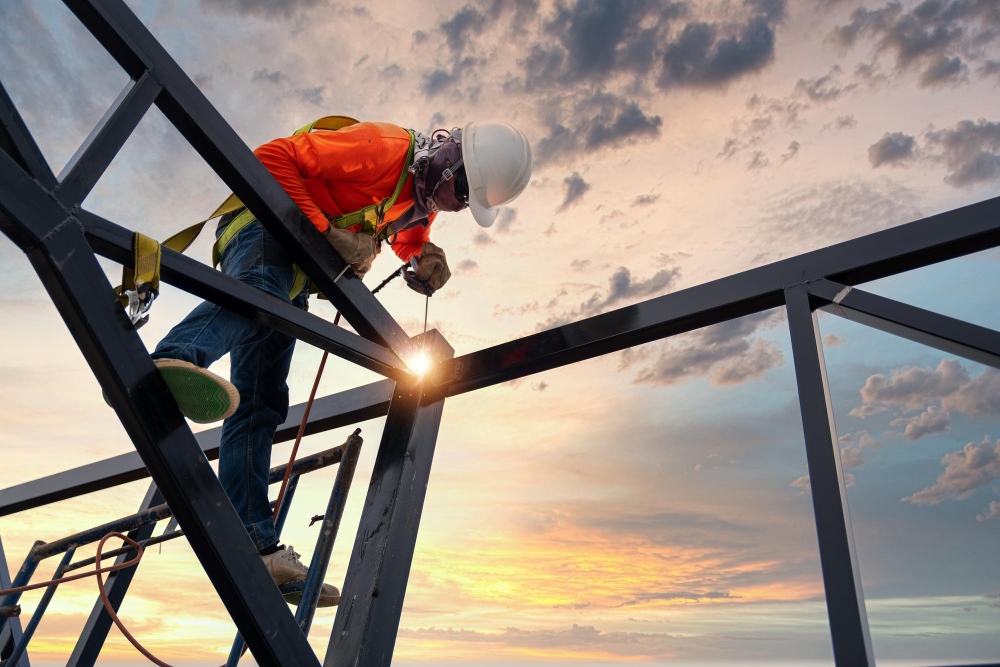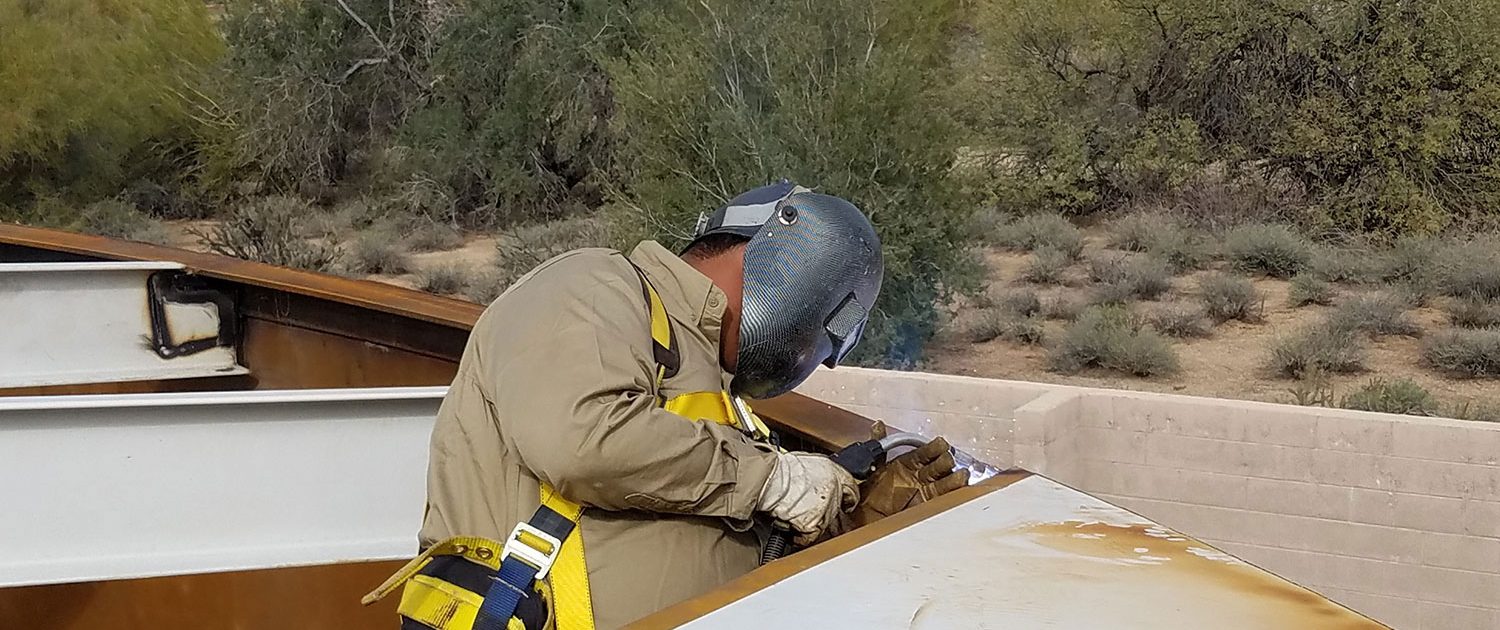Why Alpha Reo Is the Top Selection for Steel Reinforcement
Why Alpha Reo Is the Top Selection for Steel Reinforcement
Blog Article
Cutting-edge Patterns in Steel Manufacture: Enhancing Toughness and Precision
In the realm of steel fabrication, the search of durability and precision has actually brought about a wave of innovative patterns that are reshaping the market. From innovations in welding modern technologies to the assimilation of robotic automation in manufacture processes, the landscape of steel production is evolving rapidly. High-strength alloy growth, coupled with the application of 3D modeling and simulation software application, is pressing the limits of what is attainable in regards to architectural integrity and accuracy. The growing focus on lasting methods in steel manufacturing is not only driving efficiency however additionally fostering an extra environmentally mindful approach to manufacture. These patterns are not just forming the here and now however also laying the groundwork for the future of steel construction, promising additional improvements in durability and precision.
Advanced Welding Technologies
In the realm of steel fabrication, the fostering of cutting-edge welding innovations has actually considerably changed the market's method to accomplishing premium quality and precision in architectural welds. Advanced welding technologies, such as laser beam welding and rubbing stir welding, have become game-changers in the area. Laser light beam welding employs a focused laser beam of light to sign up with steel components with remarkable precision and speed, making it suitable for elaborate layouts and thin materials. On the other hand, friction stir welding produces exceptionally solid bonds by mechanically intermixing the particles of the products at the joint, eliminating the demand for thawing the metal. These modern technologies offer various benefits, consisting of decreased heat-affected zones, very little distortion, and enhanced mechanical properties in the bonded joints. By leveraging these advanced welding strategies, steel makers can elevate the durability, strength, and accuracy of their structural welds, fulfilling the increasingly requiring demands of modern-day construction projects.
Robotic Automation in Fabrication
Welcoming robotic automation has actually come to be a foundation of modern-day steel fabrication practices, improving and improving processes effectiveness across the sector. Robotics are transforming the way steel parts are manufactured, providing unparalleled precision and rate while decreasing human mistake. These automated systems can manage recurring tasks with regular precision, resulting in better end items.
One trick advantage of robot automation in steel manufacture is the ability to function all the time without tiredness, substantially enhancing manufacturing output. This continuous procedure decreases downtime and speeds up task timelines, inevitably conserving prices for manufacturers. Additionally, robots can be configured to perform intricate jobs that might be tough or harmful for human employees, enhancing security in the work environment.
In addition, robot automation makes it possible for seamless integration with other electronic innovations, such as computer-aided design (CAD) software application and Web of Points (IoT) systems (steel fixing). This interconnected strategy enhances communication between different stages of manufacture, optimizing process and guaranteeing real-time monitoring and control. As the steel manufacture industry continues to progress, robotic automation stands apart as a transformative force driving efficiency and precision in producing processes

High-Strength Alloy Development
The advancement of high-strength alloy growth in steel manufacture is improving the sector's approach to enhancing product toughness and performance. High-strength alloys are engineered to show exceptional mechanical homes, such as enhanced tensile stamina, toughness, and deterioration resistance compared to conventional steel grades. By integrating these advanced alloys into manufacture procedures, suppliers can create elements that stand up to higher tension levels and harsh environments, leading to more durable and reliable output.
One secret advantage of high-strength alloy growth is the ability to minimize material thickness without jeopardizing architectural integrity. This not only causes lighter-weight parts but additionally adds to cost financial savings and boosted effectiveness in manufacture and setting up procedures. The improved strength-to-weight ratio of these alloys permits for the design and building and construction of structures with higher load-bearing capacities while reducing overall weight.
3D Modeling and Simulation Software Application
Innovations in steel fabrication processes have been dramatically pushed by the integration of innovative 3D modeling and simulation software application tools. These tools permit makers to produce detailed online designs of their tasks, allowing them to imagine the last product with precision prior to any physical work starts. By mimicing various anxiety aspects, environmental conditions, and architectural tons, producers can maximize designs for enhanced sturdiness and performance. In addition, 3D modeling and simulation software application improve the manufacturing process by identifying prospective problems early on, minimizing the demand for costly rework and minimizing material waste.

Lasting Practices in Steel Production
Including lasting methods right into steel manufacturing processes is important for reducing ecological impact and making certain long-term resource accessibility. One essential lasting practice is the adoption of energy-efficient technologies to decrease greenhouse gas exhausts during the steel manufacturing procedure. This includes utilizing renewable resource resources, such as solar or wind power, to power steel plants and executing energy-efficient equipment to optimize energy usage.
One more essential element of sustainable steel manufacturing is the liable sourcing of raw materials. This involves ensuring that the iron ore and various other resources made use of in steelmaking are gotten from ethical and eco-friendly resources. By advertising transparency in the supply chain and sticking to stringent ecological standards, steel manufacturers can decrease the unfavorable impacts of resource removal on regional communities and neighborhoods.

Verdict
To conclude, the cutting-edge fads in steel construction such as advanced welding innovations, robotic automation, high-strength alloy development, 3D modeling and simulation software, and lasting practices are enhancing the durability and accuracy of steel products. These developments are revolutionizing the steel fabrication sector by improving performance, top quality, and sustainability. It is clear that the future of steel manufacture hinges on welcoming these advanced modern technologies to fulfill the needs of contemporary construction and manufacturing sectors.
In the world of steel construction, the search of longevity and precision has led to a wave of cutting-edge fads that are improving the market.In the realm of steel manufacture, the adoption of advanced welding innovations has significantly transformed the sector's technique to accomplishing remarkable high quality and precision in architectural welds. As the steel manufacture market continues to develop, robotic automation stands out as a transformative pressure driving effectiveness and precision in manufacturing processes.
In addition, reusing and recycling steel scrap and waste products play a considerable function in improving the sustainability of steel production. steel fixing.In verdict, the ingenious patterns in steel fabrication such as advanced welding innovations, robot automation, high-strength alloy development, 3D modeling and simulation software program, and sustainable techniques are enhancing the durability and precision of steel items
Report this page